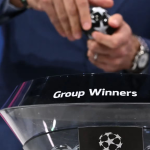
The last Champions League draw
Among the many changes in the new format one concerns perhaps the most romantic aspect, the draw with balls
March 15th, 2024
Today's draw in Nyon was the last one where we seen the glass jars, the white balls, the hands spinning to catch the right ball, the opening of the ball with bated breath. None of that will be there anymore. In the new Champions League, which replaces the format we are familiar with, there will in fact no longer be a human hand in the game, but a computer that will select the eight teams that will compete against each other in the single round with 36 teams. According to the developers, the system should guarantee more big games between the top teams and greater unpredictability right up to the final seconds of the last round. It is an extremely sophisticated process, developed to cope with a much more complicated draw than the current one, which clearly could not be managed between former footballers and UEFA delegates, as is the case now.
Compared to the current draw, where the teams were divided into groups and then selected one by one first in the groups and later in the direct matches, each of the 36 teams must now be paired with two teams from their new group and two opponents from two other groups. To complicate matters further, teams from the same country cannot meet each other and each match is played either at home or away, so no more back-and-forth matches to multiply the number of possible encounters. Quite a complication, if only because of the number of possible combinations and the number of balls that would have to be handled for each draw. After the first draw attempts had taken three to four hours, the supercomputer came into play, which had to calculate a frightening number of combinations and then - a la Dr. Strange - select the best one.
Of course, there is no shortage of early critics among traditionalists and conspiracists who fear that without the human hand, the charm of the ballot box might be lost, while the usual conspiracies surrounding the use of technology emerge. On the other hand, soccer competition draws have never been free of hypotheses about match-fixing and subterranean machinations to control certain challenges and pairings. A few years ago, Michael Platini himself claimed that the draw for the 1998 World Cup was somehow manipulated so that France and Brazil would face each other in the final. Of course, we are talking about a different competition, but the feeling that there is always an invisible hand moving the balls or warming them up, as one of the most common conspiracy hypotheses goes, hovers over people's heads like a specter, even more so after the decision to move to the virtual draw.
For this reason, UEFA has opted to have each step of the draw certified by the auditing firm Ernst and Young, one of the most respected in the world, while the selected computer will be programmed by a company in Hertfordshire. The necessary precautions will be taken to ensure the proper functioning of a process that will be difficult to explain even to fans who are not used to this tennis-like draw and which will also make the calculation of the rankings much more difficult. What will be missing is the silent ceremony, the gestures at the end of the draw in the offices in Nyon, where the teams are paired and which leads to cheers and psychodrama, crosses that have created a tradition over the years. Just think of the latest cross drawn this morning, Bayern Munich and Arsenal seven years after the last painful confrontation for the Gunners, or the anticipated final between Real Madrid and Manchester City. The final gift of a ritual that, for better or worse, has shaped an era.












